JACKSON, Mich.—Katie Stiver, 34, spent a decade working in a long-term care facility, helping people with Alzheimer’s disease and other forms of dementia.
The care she provided was often the most fundamental: feeding, bathing, grooming. She thrived on the personal relationships she cultivated.
“They still have so much to give, and they still are people inside. And I feel like the memory forgets, but the heart just does not. And when you realize that … everything you do matters with them,” she said.
In time, Stiver was promoted to activity director. But about the time she turned 30, she realized how much potential she was leaving untapped because she lacked a college-level credential. She missed providing direct care, and she knew she needed college to give her best to patients and their families. And her own family depends on her. She’s a single mother with two children, and she cares for her father, who also has dementia.
“I just knew that I had to climb that ladder. I just didn’t want to stand still anymore,” she said. Stiver had a longer climb than most. She spent six months earning her GED. Two days after securing it, she began taking courses in math and English, prerequisites to her real goal: nursing.
Now she’s at Jackson College, a community college about 80 miles west of Detroit, studying to become a licensed practical nurse. She can do that with a certificate, a credential that students can earn more quickly, at a lower cost, than an associate or bachelor’s degree. This is her second semester; she expects to complete the certificate next semester and become a nurse.
“Eventually, I’d like to be able to travel—even overseas and do missionary work when my kids are older,” Stiver said. “You can go anywhere. You can do anything you want. You can work with kids, work at a school, a hospital. And I know there’s a big demand for it,” said Stiver.
The educational path Stiver is on at Jackson College is clearer than it used to be. In the fall of 2016, the college revamped its advising and created a system of “guided pathways” in broad fields of study. It’s an effort to give students better direction toward degrees or non-degree credentials, and to strengthen the advising that helps them navigate those paths.
EARLY DATA ARE POSITIVE
Early results are encouraging. A study published last year by the Community College Research Center at Columbia University found that in the fall of 2016, 58 percent of first-term students at Jackson completed at least six credits, up from 35 percent the previous fall. In 2016, 36 percent of students successfully completed gateway math and English courses in their first year, compared with just 17 percent in 2015.
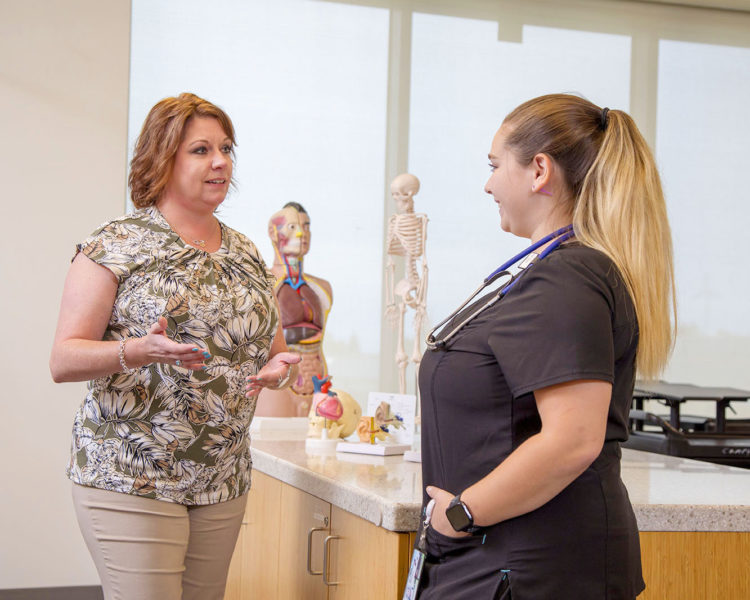
Shorter-term, non-degree credentials can qualify students for critical roles in health care, including licensed practical nurses and electronic medical records specialists.
Fitting traditional certificate and degree offerings into this guided pathways model may be easier in the health sciences than in other areas of study. Health care workers have long stair-stepped their way through progressively more demanding credentials; for example, from certified nursing assistant to licensed practical nurse to registered nurse—CNA to LPN to RN.
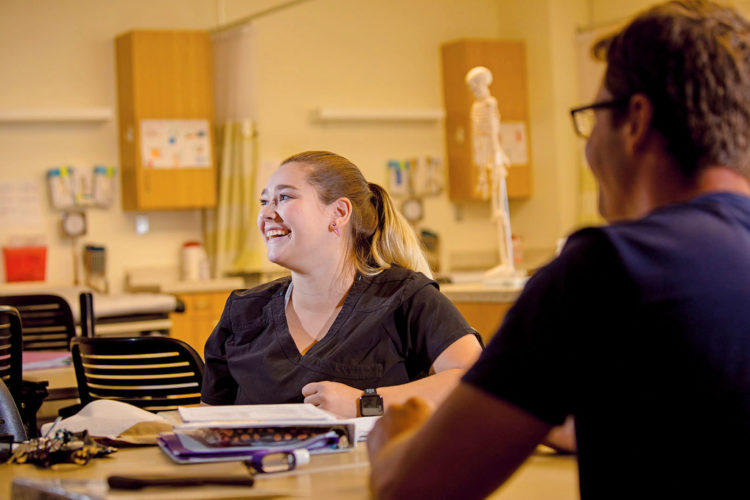
Kristin Spencer, who supervises most certificate programs in the health sciences at Jackson, said that little has changed fundamentally. Guided pathways haven’t created a new slate of degrees and certificates at the school. But thinking of a student’s time at Jackson as a path with many possible forks and destinations helps advisors, administrators, and faculty steer students in directions that give them the greatest flexibility.
“We were kind of already doing it,” Spencer said. “Within the programs, we’ve had our sequence of courses that the students had to follow. Really all it took was in all the programs, looking at what our shared courses were so we could then make sure that we were putting those courses in that first semester. So, that way the students were able to explore and weren’t wasting time if they switched programs.”
In the certificate programs she supervises, that means taking courses in human biology and medical terminology in the first semester, “because those were courses that we all shared in the pathway. Then students could easily switch to another program if they wanted to,” Spencer said.
Arranging courses that way helps prevent students from earning credits that don’t count toward a specific certificate or degree. That’s enormously valuable for students who want to shift direction after a semester or two.
That was the case for both Tessa Risner, 22, and Hope Ross, 20. They expect to complete the course work this semester to become certified medical assistants (CMA). Medical assistants are staff that patients often mistake for nurses. In doctors’ offices, medical assistants are often the people who take a patient’s vital signs, question them for preliminary histories and schedule their appointments.
CHANGING COURSE – AND COURSES
“This is my third change of program. I had started out set on being a teacher,” said Risner. “Then I wanted to get into the medical field, looked into sonography, started the classes for that, didn’t like it.”
After Ross graduated from high school, she finished a course to become a certified nursing assistant. She worked in a nursing home, briefly, as a CNA and was disappointed in some of the nursing she saw there.
“I was like, ‘Well, we can’t have nurses out here acting like that.’ So I decided, ‘I’m going to be the difference. I’m going to be the nurse who knows what she’s doing, who is competent,’’’ Ross said.
“I started along the path” to nursing, she said. “I couldn’t stand it. It was so slow. … They weren’t hands-on. I’m a hands-on learner, so it was very hard for me to excel in a course that didn’t quite fit me.”
Spencer helped both Ross and Risner shift their goals to medical assisting. Spencer isn’t formally an advisor—now called a “student success navigator” at Jackson. But because she supervises so many certificate programs, she talks with a lot of students about their education and career plans.
Medical assisting was an appealing alternative for Risner. In recent months, she has spent a lot of time in the hospital with a year-old niece who had an 11-hour surgery to repair a congenital defect in her skull and has been treated repeatedly for a stubborn post-surgical infection. That time in a hospital strengthened her resolve to work with patients.
For Ross, it was her own time in hospitals that made a career in patient care attractive. She was diagnosed with rheumatoid arthritis when she was 18 months old. Since then, she’s spent many long days in treatment for that condition.
“It was interesting for me to learn that most of the people who have been taking care of me my whole life have been CMAs,” she said.
“My dream is to work in the rheumatology clinic at (the University of Michigan) and take care of kids,” she said. “I was once where they are sitting.”
In the meantime, another opportunity is opening for Ross at Jackson College. Her performance in the medical assisting program has been strong enough that she will become a volunteer teaching assistant later this semester. Spencer said she hopes to make her a lab assistant after she graduates. That’s a position Ross could coordinate with work as a CMA.
If you’re not part of a practice that depends on medical assistants, it could be easy to underestimate their value. Terri Draper, an advisory board member to Jackson’s medical assisting program, is the practice manager at Jonesville Health Care, about 20 miles southwest of Jackson College. Her practice employs 14 medical assistants.
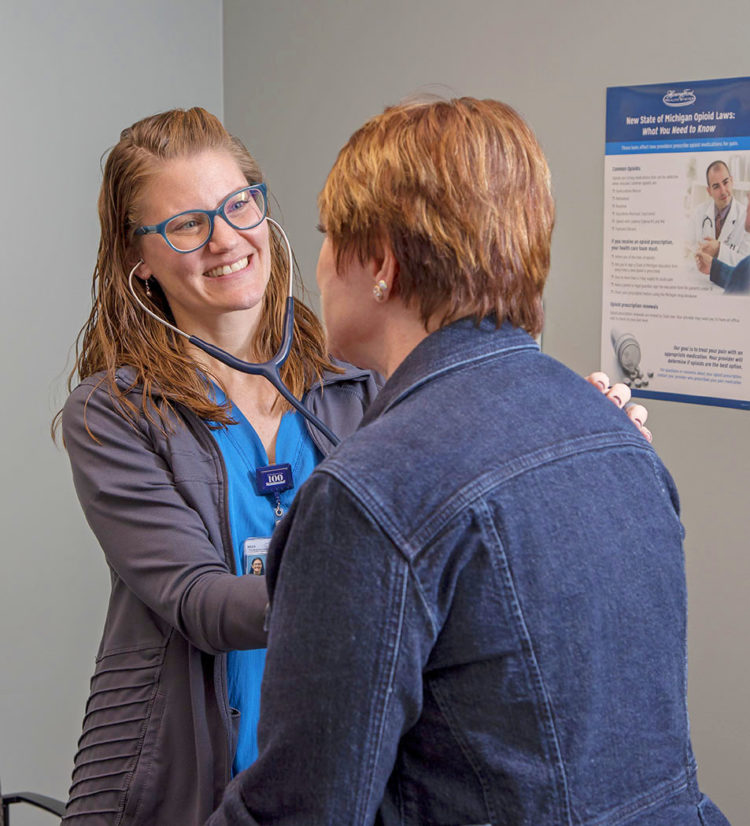
“They are mission critical to the thoroughness of the exam that the doctor’s doing,” Draper said. “They’re also the gatekeeper to make sure that we stay on task, on time and don’t miss anything. They are critical to information-gathering and making sure that I have that complete medical record. We would be in trouble without them in a practice nowadays.”
Being a medical assistant also brings the personal rewards of direct patient care, said Jackson graduate Devin Bills. Bills, 38, is a medical assistant at Henry Ford Allegiance Family Medicine in Onsted, Michigan, thanks to a career change in her 30s. Her previous work, caring for people with developmental and physical disabilities, primed her for a career in health care.
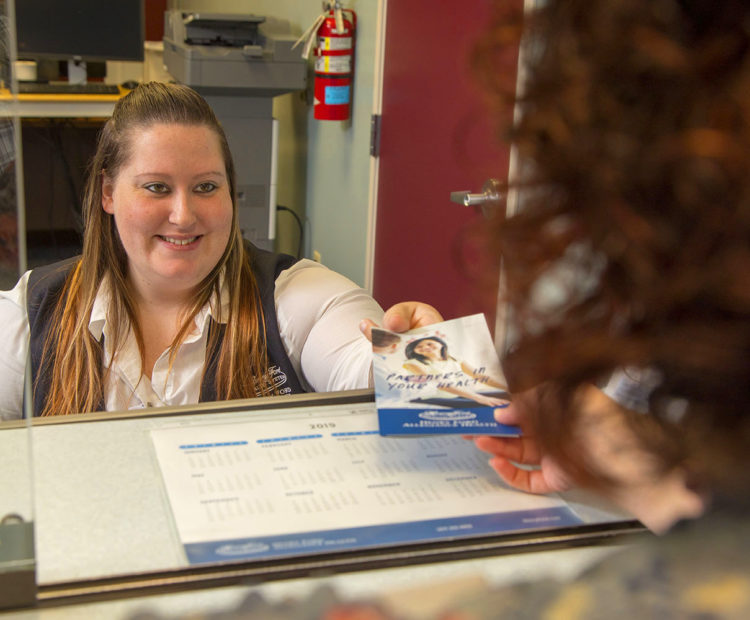
“When I was 18 years old, I got a job working in group homes for adults with developmental disabilities and physical disabilities. So, some people didn’t walk or talk or feed themselves—all the way up to people who were only part-time needing my help a couple of hours a day. And I did that for 16 years. … I was passing medication, taking people to doctor’s appointments, using feeding tubes. I was exposed to the medical world through that,” she said.
‘THE VOICE FOR MY PATIENTS’
All of that set up Bills for her current job, one that she’s held since graduating from Jackson’s CMA program in November 2017. In that job, she embraces a particular role, one she considers deeply satisfying. She calls it “being the voice for my patients.”
“I have a lot of complex patients, a lot of patients on Medicare, Medicaid, and they just have struggles. They just have certain issues that I can relate to or I can be empathetic with,” Bills said. “And I have a lot of patients who are like, ‘It’s so easy for me to talk to you,’ and ‘I feel like you really listen. I feel like you’re hearing what I’m saying.’ And that just really makes me feel good about what I’m doing. I can go back and tell my provider, ‘The patient said this or that. I kind of picked up on something when we talked about this.’”
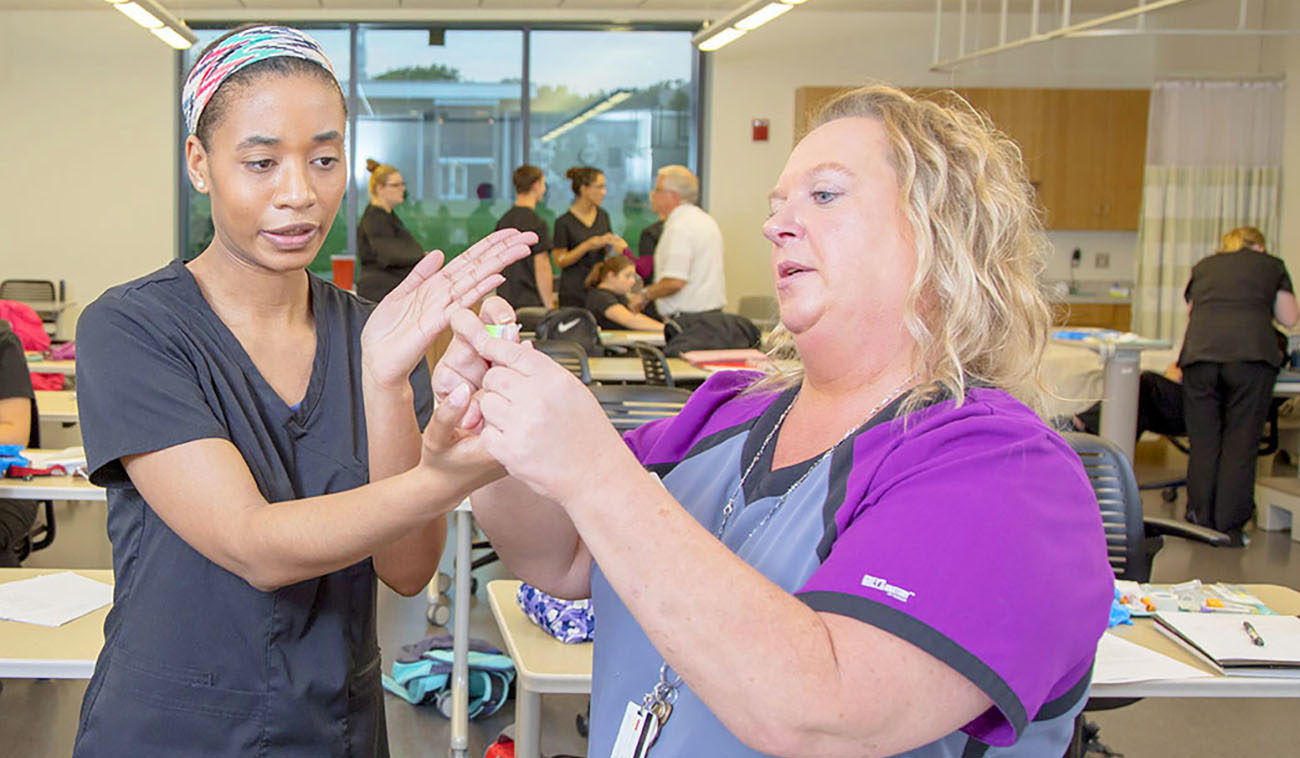
With its array of health care certificates, Jackson offers several opportunities for a student to begin a promising career without years of study or tens of thousands of dollars in tuition. One example is phlebotomy, the techniques for drawing blood. In one semester, three classes and 10 credits, a student can earn a credential called a “skill set” in phlebotomy.
Rio Beaty, 26, has tried her hand in many courses of study—journalism, Spanish, culinary science and anthropology.
“I want to get into the medical field,” she said, and so far, phlebotomy appeals to her. “It’s hands-on. It’s fast-paced, and obviously, there are jobs in this field.”
She thinks it’s likely she’ll use phlebotomy as a first step toward a more advanced credential in health care. “Maybe a medical assistant or something like that,” she said.
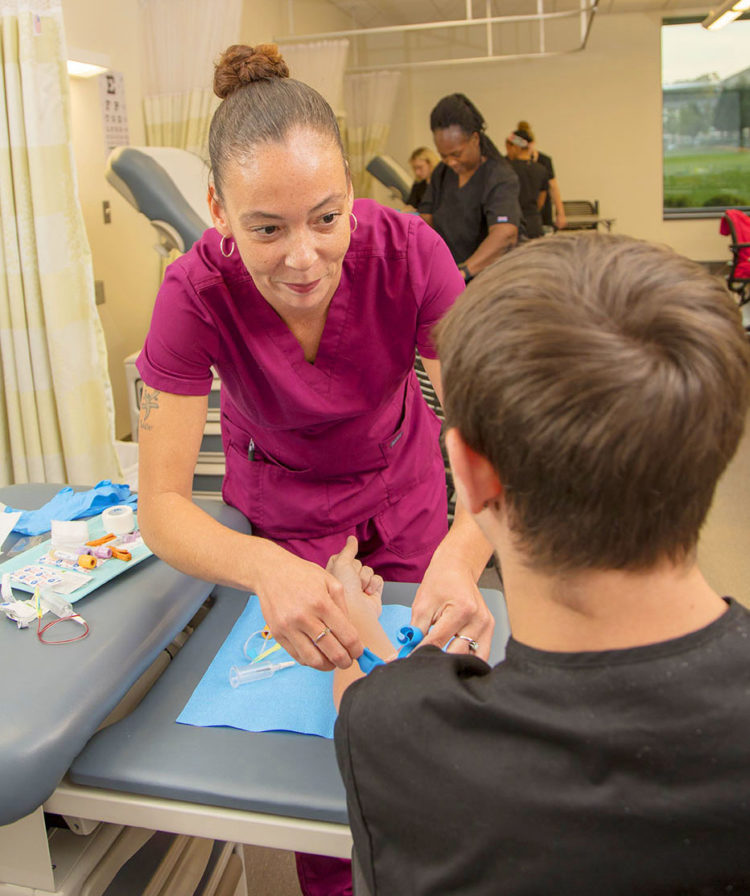
Tara Sims, 35, says she’s working to earn the phlebotomy skill set as a chance to break into health care—a field where jobs are secure.
“This was something that I didn’t necessarily have to take the extended years of schooling for it, but I could still be in the medical setting,” she said. “Somebody is always going to be sick. You’re always going to need medical help; that’s something that’s never going to go out of style.”
Sims already sees herself adding another skill-set credential after phlebotomy. She’d like to enroll in EKG technician courses next semester. In one more semester, with three more courses totaling nine credits, she could add that to her developing portfolio of medical skills.
Liz Snell is one of two student success navigators who advise health science students at Jackson. Part of her job is to help students devise a Plan B or C for their education in case the original goal becomes unattainable or loses its appeal. That could mean becoming an LPN or a medical assistant if a student isn’t accepted into the training program for registered nurses. Snell said the way advising has changed under the guided pathways model helps her do that. Early last year, she began working only with students in health sciences—in her case, 440 of them.
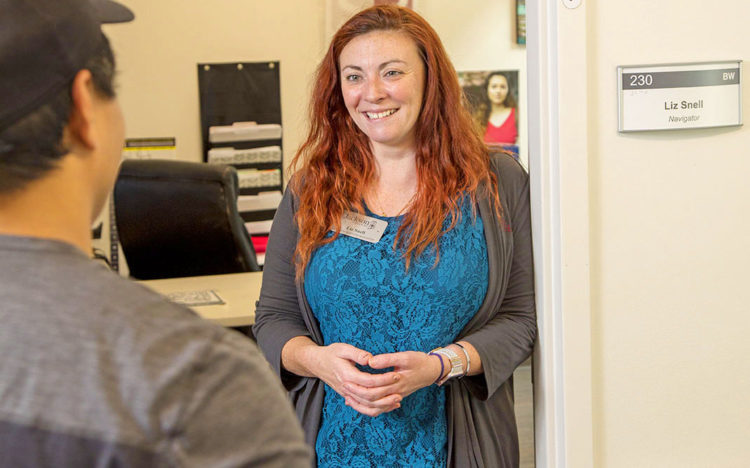
Because she knows course offerings and certificate and degree requirements in greater depth, she’s better able to tell students about alternatives. “It allows us to become a subject-matter expert and know the intricacies that are coming down the pipeline as far as changes,” Snell said.
Most important: She sees students more often. “I do think that moving to this model has allowed us to gain better relationships with our students, too,” Snell said. “I’m seeing the same students all the time. … We’re becoming a one-stop shop.”
In the first semester, students are required to meet with their navigators three times. Snell likes to use these first meetings to help students think through their course selections and prospective careers. A part of that work is helping them think about how one credential could position them to pursue others.
For some students, stacking or extending credentials seems almost instinctive. Students studying to become LPNs have that instinct. Snell said she knows of only one student she advises who wants to stop at being an LPN.
That one student is certainly not Katie Stiver. Her family responsibilities and concerns about time and money aren’t enough to stop her from becoming an RN. “I want my bachelor’s (in nursing),” Stiver said. “I don’t know if I’ll continue on. A lot of my friends say that I should, that I should go for my nurse practitioner, but I don’t know if I see that in my future.”
Of course, no one knows what the future holds, and Stiver may change her mind. After all, she’s already shown how she feels about untapped potential.
